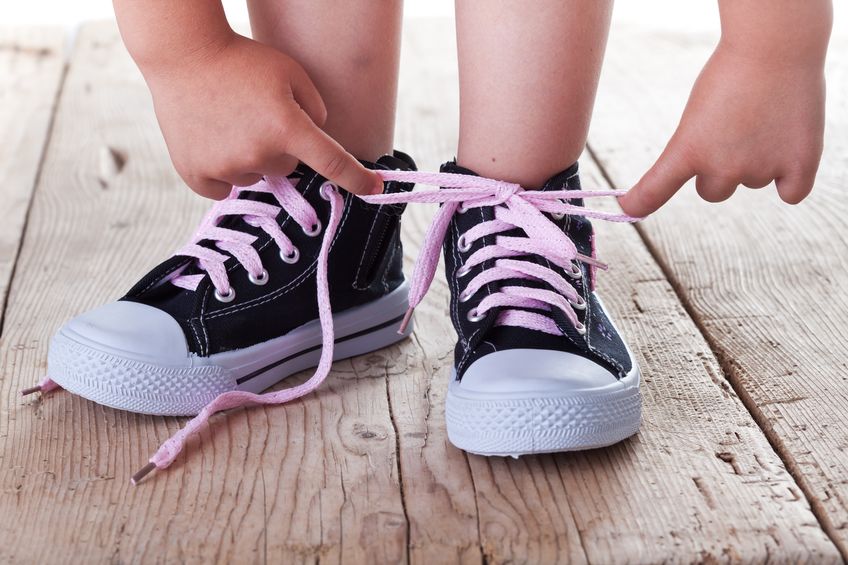Allow your child to grow and embrace the person they are meant to be
If you have started plants from seeds, you know that you must thin the seedlings out to make room for them to grow and thrive. Similarly, a child needs room to grow into a healthy independent, self-sufficient person.

Plants that are too tightly packed together, tend to choke each other out. Overcrowding can lead to decreased amounts of nutrients that the seedlings can absorb from the soil. This can stunt their growth and make them weak and more prone to disease. It also affects their root system.
No doubt, parental involvement in a child’s life is important. But the amount and type should be age and developmentally appropriate. A normal healthy child needs space to grow. They need their own activities and the ability to establish their own friendships. This helps them develop healthy social skills. Social skills include caring, sharing, showing kindness and compassion.
You may have heard of helicopter parenting which is often referred to as over-parenting. It involves excessive amounts of involvement and control by a parent in the life of their child. These types of parents are well intended, but they stifle their child from growing into an independent person. The effect on the child is they may then expect life to always be easy. They may not have the ability to handle it when life gets dirty.
Somewhat related, children need to be allowed to make mistakes. If a parent swoops in every time a child is about to stumble and fall, the child doesn’t learn their own limits or how to pick themselves up on their own. This is a difficult part of parenting. It requires a lot of patience and some restraint.

There are times where it would be quicker to do things for your child like dressing them especially on a busy workday morning. Tying their shoes for them rather than letting them struggle to do it themselves, would also be a whole lot easier. But exercise patience and give them the time and space to learn.
Let a child learn to make choices. Picking out the clothes they wear for the day is one choice. You might want to give them a couple options or outfits to select. This prevents them from selecting the long sleeve, wooly, black sweater on a 90-degree Fahrenheit day or shorts and flip flops when there’s two feet of snow on the ground. Ideally, we want them to feel good about the choices they make, and not feel miserable the rest of the day.
Have you ever gotten a house plant and killed it by over watering it? I have done that more than once. I think I am caring and nurturing the plant but sometimes giving it too much of a good thing, destroys it.
Likewise, in a society where resources are plentiful, it is easy to want to give our children too much. A child doesn’t need everything and often, prefers, and does better with less. It reminds me of a baby on it’s first birthday where they are surrounded by birthday gifts. The child is often more interested and intrigued by the colorful and crunchy sounding wrapping paper and the shiny, sticky bows than the actual gifts themselves.
Encourage your child to participate in organized activities and sports. This teaches them how to be a team player which is a lifelong skill. This also gives them another opportunity to learn to listen, follow directions and show respect to a leader or a person in charge. At the same time, it helps them to exercise their minds and body.
We need to allow our children to be creative and imaginative. Allow them to explore and be adventurous. Not every minute of their time needs to be structured. Provide them space to stretch out and grow into who they are meant to be. Let them play in the dirt, watch the ants crawl, see the squirrels chase, while they question the wonders and beauty of the earth.
Keep your child’s life balanced. Allow enough space for downtime and sleep. Try not to pack so much into their day that they feel choked out like the seedlings, where they may become overwhelmed to the point of paralysis, frustration, or exhaustion.
I have experienced overcrowding of plants in our garden. Some of the seeds are so tiny, like the radishes and carrots, it seems miraculous that a plant can grow from such a little spec of a seed. It is tempting to not want to disperse a lot of them while planting them in the soil, hoping a few will take root. They will take root, and if they aren’t thinned, they start combining with the plants next to them. They won’t grow to full maturity and sometimes they just die.
Just like plants need enough space to grow and thrive, give your children the needed space to develop. Expose them to the adventures of life but at the same time keep their lives balanced. Allow them to grow into an independent, self-sufficient little human person that they are meant to be.
Sonja Wendt
Enhancing children’s sensitivity in human interactions one story at a time.
Author and Reading & Seeding Leader
Cultivating Compassion in Children Books Series
720-260-6296
Books Available on Amazon: http://bit.ly/SonjaLangeWendt
This is the seventh in the series of DIG IN, Steps to Cultivate Compassion in Children. The others are: 1) Let’s Talk Dirt 2) Plant Perennial Seeds of Compassion That Grow Deep Roots 3) How to Water the Seed with Compassion — Sprinkle Them with Knowledge 4) Why Growing Seeds Need Fertilizing – Nourish Understanding Feeding Compassion 5) Why Seeds Need Air as a Child Needs Breathing Room – Exhale Compassion 6) How Sunlight to a Plant is like Energizing Compassion in a Child
©2021 sonjalangewendt All Rights Reserved



Your helpful article reminds me of a strategy that one of my former student’s parents used in order to make morning dressing time easier (while still providing autonomy for the child). This child had a hanging shoe rack in her closet, however, it wasn’t used for shoes. Instead, each Saturday, this child would discuss the weather forecast with her mom and then choose all seven outfits for the upcoming week. Each outfit was placed in one of the shoe holders. This saved a lot of time during the busy mornings and the child felt very happy that she picked out all 7 of her outfits for the week!
I love that idea. Thank for sharing.